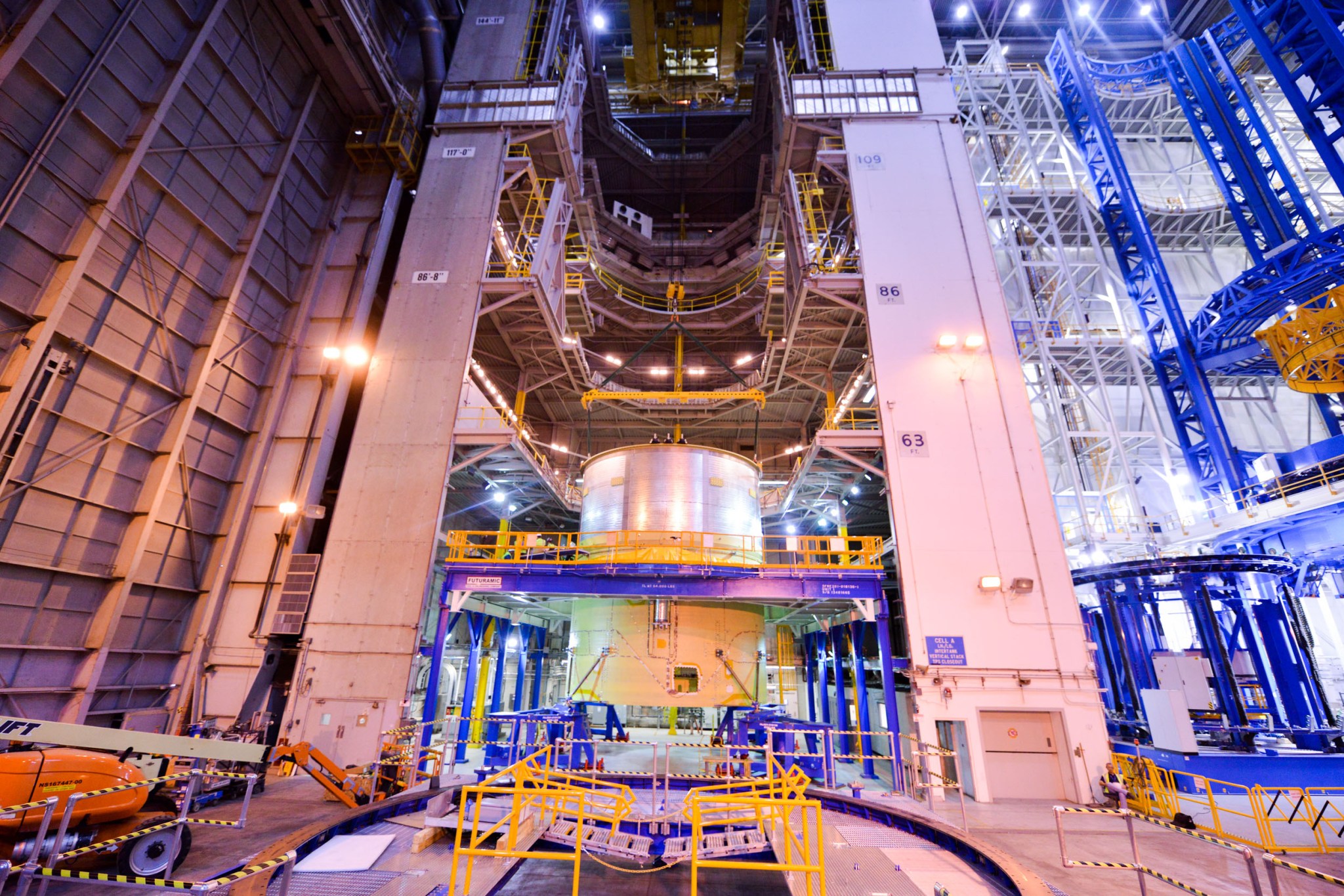
Media are invited to see the first completed core stage structural test article of the Space Launch System rocket built at NASA’s Michoud Assembly Facility in New Orleans at 9 a.m. CDT on Tuesday, April 25. This engine section structural test article, which will provide critical data for the world’s most powerful rocket, will be shipped on the barge Pegasus from Michoud to NASA’s Marshall Space Flight Center in Huntsville, Alabama where it will undergo structural testing.
Media will have the opportunity to see the engine section test article and tour the barge Pegasus before it departs for Marshall. NASA officials will be available for interviews. Delivery of the first SLS core stage test article represents major progress toward obtaining critical test data for the first integrated flight of the Space Launch System and Orion spacecraft.
News media interested in attending should contact Tracy McMahan in Marshall’s Office of Communications at tracy.mcmahan@nasa.gov or 256-682-5326 or Susan Wilson at mary.s.wilson@nasa.gov or 504-257-2208 no later than 11 a.m. Monday, April 24. Media must report to the Building 101 visitor’s area, by 9:00 a.m., Tuesday, April 25 for access to the facility on 13800 Old Gentilly Road. Journalists must be U.S. citizens and have media credentials with photo identification to receive access. This is an industrial environment, so media must wear business casual clothes and wear pants, and closed-toe shoes with heals smaller than two inches.
The rocket’s engine section test article is the first of four core stage test articles manufactured at Michoud. The engine section, the bottom of the 212-foot-long core stage, has to be strong because all four RS-25 engines and the SLS’s two solid rocket motors are attached to it and produce 8.8 million pounds of thrust at lift-off. The structural qualification test article was designed to the same specifications as the engine section that will fly on the first SLS mission.
At Marshall, the engine section article will undergo extensive structural testing. It will be pushed, pulled and twisted to see how it can withstand the extreme forces the rocket will experience during launch, liftoff and flight. These tests, along with analytical models and other data, will show the design of the engine section is structurally sound.
After the engine section is loaded, Pegasus will travel 1,240 miles by river on its first trip to Marshall and its first trip delivering SLS hardware. NASA modified the barge increasing it length and weight-carrying capacity to carry the entire SLS core stage, which is 50-foot longer and more than 600,000 pounds heavier with support equipment than the space shuttle external tank. It will transport all four SLS core stage structural test articles to Marshall. Pegasus also will transport the entire flight core stage to NASA’s Stennis Space Center near Bay St. Louis, Mississippi for testing, and then on to NASA’s Kennedy Space Center in Florida for integration into the SLS vehicle and launch.
For more information on the SLS structural loads testing, visit:
For more information on NASA’s Michoud Assembly Facility, visit:
Tracy McMahan
Marshall Space Flight Center, Huntsville, Ala.
256-682-5326
tracy.mcmahan@nasa.gov


























